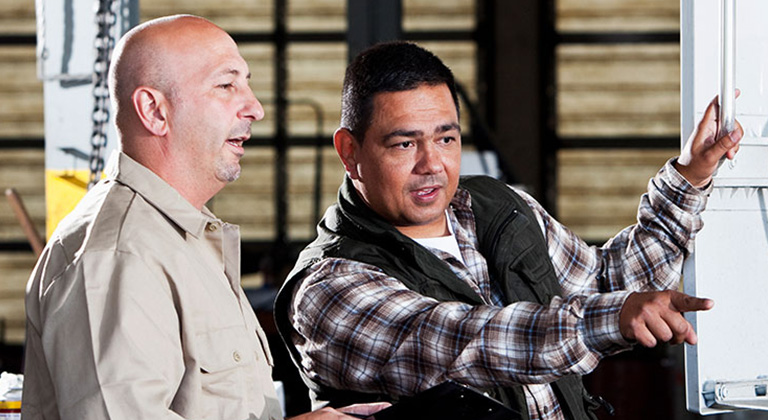Fleet maintenance
Safety rules mean a safer shop for your employees
Mechanics and technicians performing truck maintenance and repair face many types of safety hazards. If those hazards turn into accidents, it can mean serious injuries or even death. But there are ways to improve the safety of fleet maintenance and repair operations. Here are some tips that can help:
Prohibit horseplay in the workplace
Wear seatbelts while moving any vehicle during maintenance
Secure compressed gas cylinders in an upright position with caps in place
Store and dispense of flammables using approved safety containers
Ensure hoists are safe and secure before working under or around them
Allow only trained and qualified employees to operate machinery and equipment
Remove keys from the ignition and chock wheels until the work is completed and all personnel and tools are clear
Observe all signs, warnings, and labels posted on containers and machinery
Post signs and strictly observe “no smoking” areas
Show employees the location and proper use of fire extinguishers
Follow Environmental Protection Agency guidelines for recycling or disposal of solvents, fluids, refrigerants, and waste
Follow prescribed safety procedures for removing brake dust from brake drums, hardware, or calipers
Correct safety hazards
Report all injuries to management
Take disciplinary action for shop safety rule violations
Even keeping a clean work environment can help by cutting down on the risk of slip, trip, and fall accidents. Those can be serious and often force employees to miss work for long periods.
Personal Protective Equipment
The use of Personal Protective Equipment (PPE) while working in a maintenance shop is also essential. Occupational Safety and Health Administration (OSHA) rules for the use of PPE cover protection necessary for the eyes and face, head, hands, and feet as well as requirements for hearing and respiratory protection.
Hazards of rim wheels
Accidents involving single-piece rim wheels and those involving multi-piece rim wheels can be especially dangerous due to the sudden release of the pressurized air contained in the wheel. Employees who service rim wheels must be trained in the hazards and the proper safety procedures.
OSHA Standard 29 CFR 1910.177 applies to the servicing of multi-piece and single-piece rim wheels on large vehicles. It includes:
Training for all tire servicing employees
Using industry accepted procedures that minimize the potential for employee injury
Using proper equipment such as clip-on chucks, retraining devices, or barriers to retain the wheel components in the event of an incident during the inflation of tires
Using compatible components
These are just some of the ways we can help make sure a fleet workshop remains safe. As always, if you’d like more information, talk to a Sentry safety specialist. We’re here to help.
Related resources
Controlling product theft
A customer comes in and leaves with your product, never intending to pay for it. It’s a false pretense loss, but there are ways to help avoid it. We’ll explain.
Defensive driving
Trucking can be dangerous work. That’s why we want to help make sure all drivers practice the best safety measures. Take a look at these tips.






